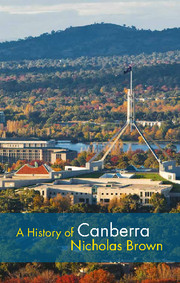1 - Ngunawal country and the Limestone Plains
Published online by Cambridge University Press: 05 July 2014
Summary
A GOOD SHEEP STATION SPOILED
For a city preoccupied by its own becoming – its destiny as a peerless national capital – Canberra sits in a landscape of layered, often lost histories. The future has always beckoned the city, even taunted it. ‘I have planned a city that is not like any other’, Walter Burley Griffin declared in 1912: ‘a city that meets my ideal of the city of the future’. That aspiration set the tone for visions of Canberra’s perennial making – laments at provisional structures, transient populations, or urban forms unravelling across the landscape (as novelist Tom Hungerford saw it) like ‘a mad woman’s knitting’. Over a hundred years on from the inauguration of the capital on 12 March 1913, a familiar story contains a wealth of gestures towards a time yet to come. But the perpetual ‘time will tell’ verdict too easily obscures a past on the Limestone Plains that has a significance of its own.
The derision of Canberra as a ‘good sheep station spoiled’ allows that it had first to be a sheep station, and a good one at that. Let the borders proclaimed in 1910, to mark the surrender of the Federal Capital Territory from New South Wales to the Australian Commonwealth, blur back into their mountain ridges, watersheds and train lines, and then the landscape reveals other meanings and purposes and displays a history connecting with wider patterns of experience. Throughout the 19th century, and long before, the site of the future capital was a microcosm of phases of adaptation to the environment, of work, movement, authority and community. Those layers of endeavour and belonging never entirely disappeared beneath the experiment to come.
- Type
- Chapter
- Information
- A History of Canberra , pp. 6 - 36Publisher: Cambridge University PressPrint publication year: 2014



